Introduction: Now we’ve reached part 4 of 6 in the ongoing anniversary series of LA1K. In issue number 3 of “Amatør Radio”, we mentioned Field Day as a part of the yearly contest calendar. As it is such a large part of the year for our club, we thought it deserved some more dedicated space just to cover it properly. The fall editon of AR also features Field Day reports from the current year’s NFD, so we thought it would be a better fit!
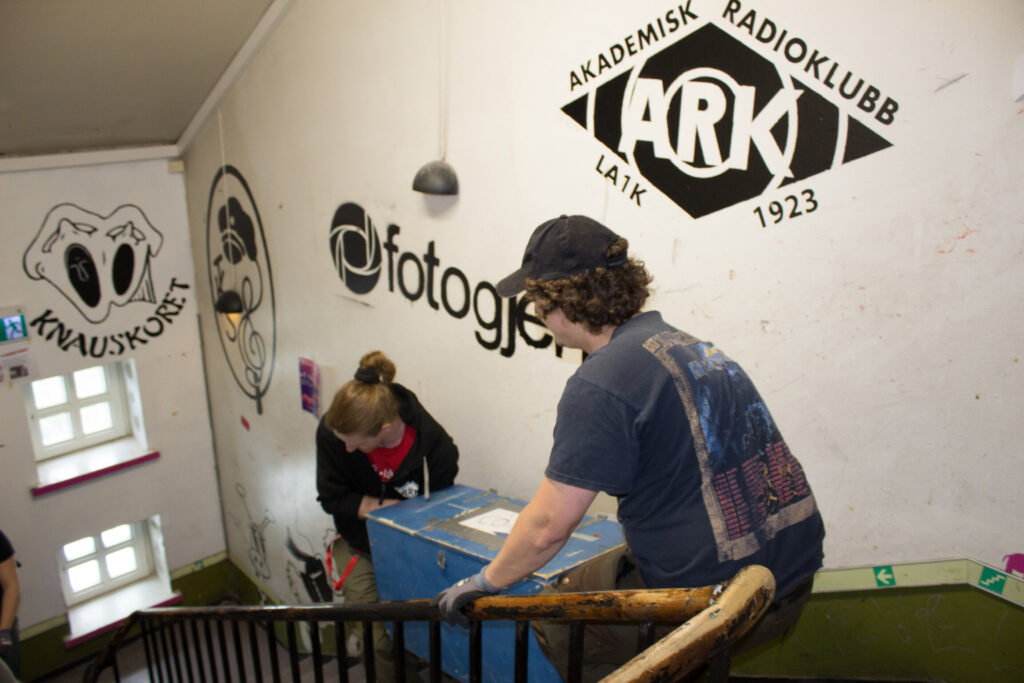
With: Andreas Ø. and Stian LB5QI
Photo: Magne LA1WUA
A New Contest
Since the dawn of time, ARK has been on the move. The first “permanent” room was at NTH Gløshaugen’s experimental houses in 1927, in the dome of the new Student Society in 1929, and later in the south side attic of the same building after World War II. As previously mentioned, the Student Society has not been the most appropriate place for contests, as QRM and interference with the sound systems and from partying members have generally proved to be difficult to handle at weekends. NTH Gløshaugen therefore proved to be a good refuge for many of the very attractive contests from the 1960s onwards. However, in 1992 there was a contest where we could no longer do this, when NFD, “National Field Day”, was to be organized by NRRL for the first time. Here it was not just about transmitting, you also had to operate from a portable rig, set up for the purpose.
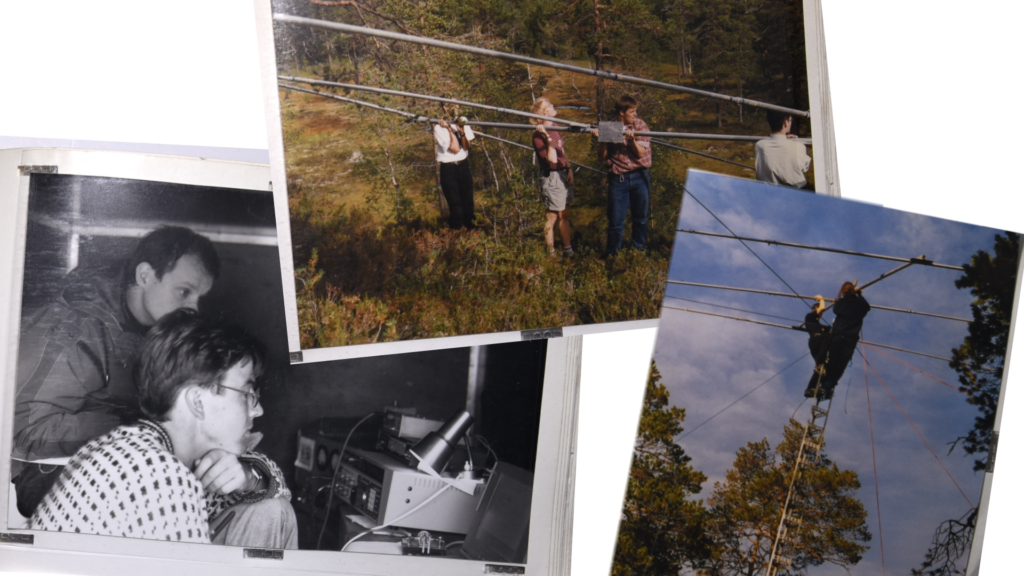
With: Jukka OH8PB, Joachim LC2DAT, (not written). In the tower, LC2DAT and LC8MAT
The C-license has since been discontinued so you won’t find these on the air anymore!
Walking into the woods with a lot of equipment may not be the easiest task in the first place, but there is still no shortage of what equipment the club has brought along over the years. Large parts of ARK’s shack tend to be dismantled on the occasion of the competition, including large radios, amplifiers and cables. Although the oldest equipment has long since been replaced with newer versions, the vast majority of both new and old remain. Store-PA, which has been mentioned in a previous article, has been at Field Day quite a few times since the 90s, and is still part of the equipment brought along to this day. Although the club is fairly well equipped with good transceivers these days, the older radios are a good supplement for a complete shack in multiband contests. In recent years, we have operated with 4, 5 and 6 rigs, with many of the old radios. For example, the ICOM IC-756 Pro III still remain one of the favourites, especially among the members who have been around for a while.
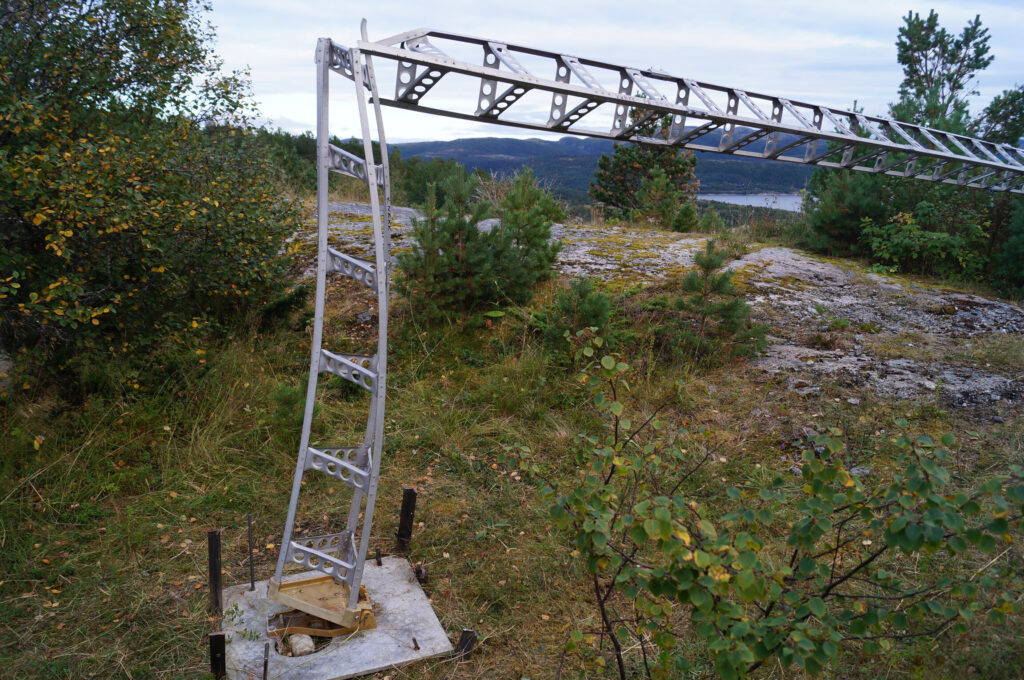
Photo: Marie LB1MH
Antennas
In terms of antennas, the club has “always” brought the Texas-tower, a triangular antenna mast consisting of 3m sections which. After a few crashes and falls, it’s limited to three remaining pieces. The first antenna to live in the mast was a 3-element 20m yagi. Today, the tower works best as a suspension for various wire dipoles for 80m and 160m. Otherwise, we also tend to take a “Red Cross” mast with us, which after a number of loans from the Red Cross was handed over to the club as a permanent fixture in recent times. It’s actually known as an AB-952 mast, but you can guess where we got the dubbed name from. Over the years, the club has tried to build better antennas, including a 40m reversible dipole, aptly named “Bananaphone” because of the crooked shape it takes when mounted. In 2016 the club invested in a Spiderbeam 20-15-10m yagi antenna, which has performed outstandingly and without a doubt increased the possibilities of contacts on these bands. The Spiderbeam antenna was purchased with an upgraded 3kW balun, as well as with an associated triplexer which allows all three bands, if necessary, to be operated at 1kW at the same time. In recent years, there has been a lot of planning and experimentation with different new antennas, including this year where full-length quarter-wave vertical for 80m and 160m was attempted. This is definitely shaping up to be a post on our blog soon.
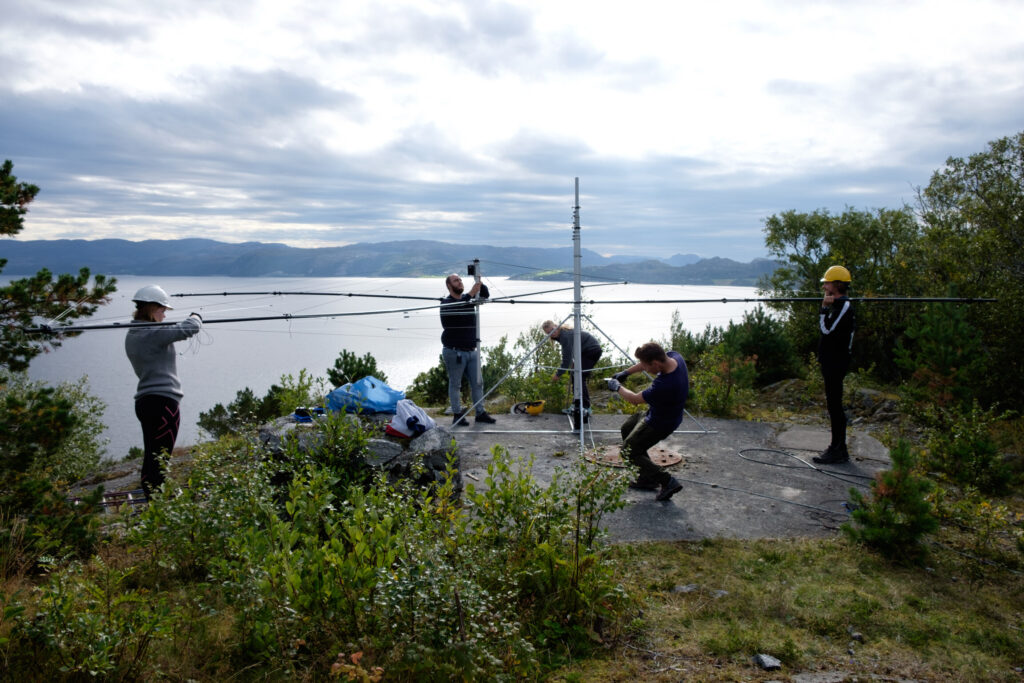
With: Lise Berg, Julian LB5QG, Mari LB4GI. Håvard LB7FH and Jens LB6RH
Photo: Magne LA1WUA
QTH
The location for each Field Day have varied quite a bit over the years. In over 30 years, we have visited 9 different QTH, many around the Trøndelag region, but also as far south as Hjerkinn in old Oppland. A stereotype you see in ARK is that if something works well, you stick to the same plan for several years in a row. In 1992, it all began in the NTNUI bunkhouse in Malvik at Heinfjordstua. This became ARK’s permanent QTH right up until 2006, when the last visit took place. By then, FD had been hosted from there a total of 13 times. Since then it has varied quite a bit, with some semi-permanent QTH at Kvamtrøa, Fort Brettingen, and now for the last five years in a row, Samatun in Melhus.
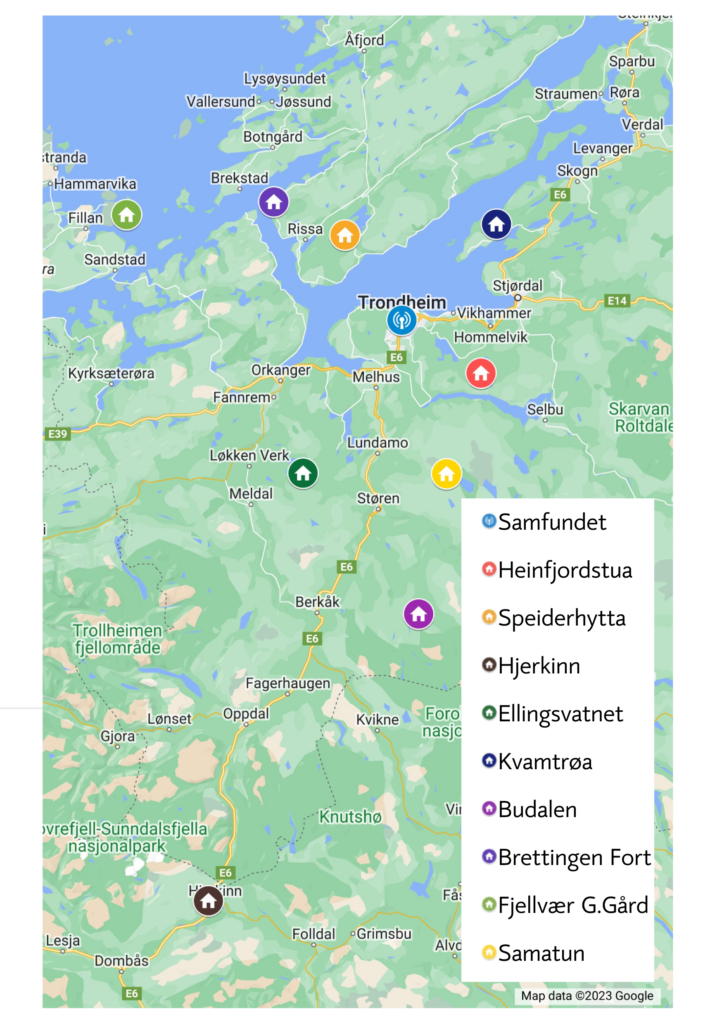
On some occasions, there has also been more than one group that has participated with LA1K callsigns, competing against each other. In 2007, LA1UKA competed at the same time, which managed to climb up to the third place, while the LA1K callsign managed to cling to second place. In 2008, LA1ARK competed a little less seriously, from the plot behind the Studentersamfundet in Trondhjem. If this counts, it is the first and only time in Trondheim municipality! This site is currently a workplace for the new extension of the Student Society, which will be completed in the spring of 2024. A very good opportunity for a new antenna park, if we dare say so ourselves.
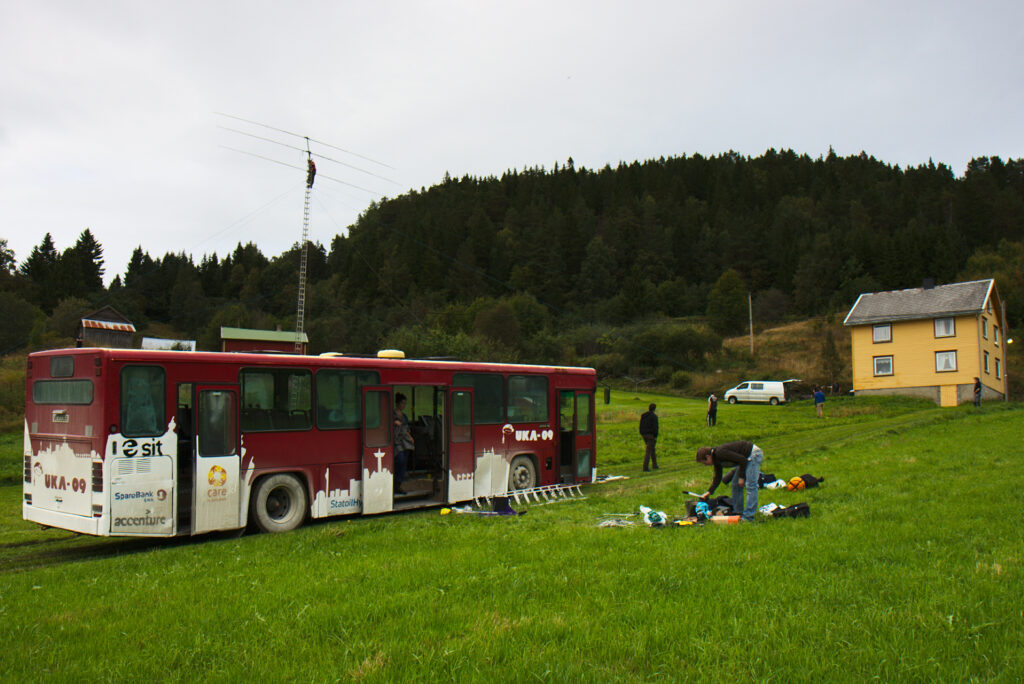
From 2009, notice the Texas-tower from earlier in the background
Photo: Andreas LA2TSA
Results
LA1K has participated in the Field Day contest 30 times out of the 31 it has been held. The one exception was in 1994, possibly before the competition had gained the footing it would prove to have. The results from the competition were quite stable to begin with, gaining first place in it’s class from the very beginning in 1992. Lasting until the end of the 90s was a period of glory, with victories that possibly went straight to our heads. A letter was even sent in to “Bullen” (NRRL newsletter), (later withdrawn), with a desire for smaller prize trophies, as the trophy shelf was almost full.
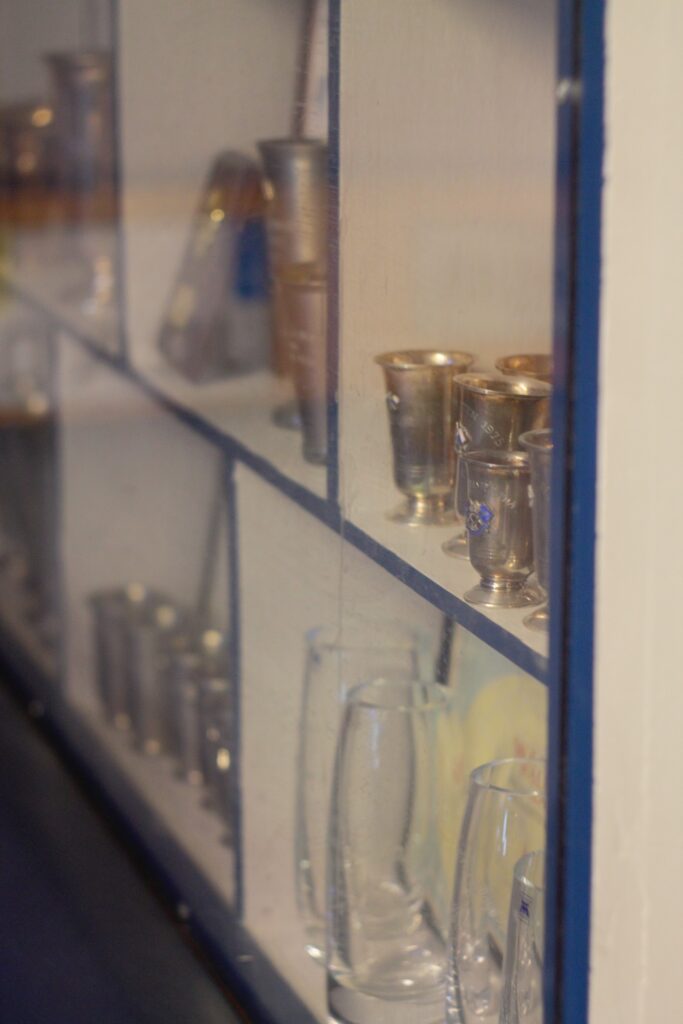
Photo: Kristoffer LB0VG
Since then, we were put in our place and regular wins were less frequent. The last time LA1K was the best in it’s class was back in 2018. From various notes, 1st place has been achieved 15 times by LA1K. However, the level has held up well with a number of victories in the new millennium, but the glory days are over for this time around. There has undoubtedly been more competition in recent years from dedicated contest stations that have participated, besides the fact that CW participation from our club has been absent for the past 10 years. But, these are just experiences that we have to learn from, and maybe sometime in the future we can once again be allowed to complain about too big prize trophies.
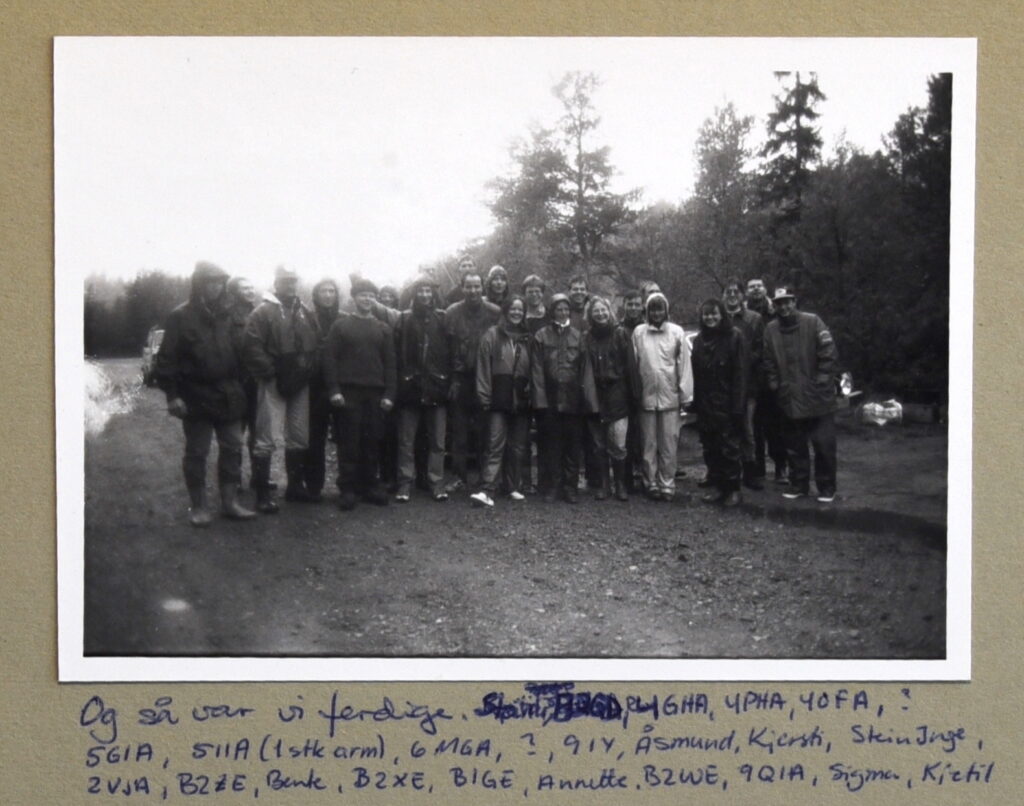
Original captions included!
Portable Evolution
Field Day has also helped further engage radio interest for students who have graduated and moved on to wherever their careers would take them. In ARK, it’s “retirees” have formed post graduation associations. The oldest is LA1TUR, which started in 2000 and lasted for a short period until around 2004. A little later in 2008, a group was established as a small offer for all the retired members who did not want to become grumpy old seniors among the younglins. This group somewhat ironically goes by the name “Academic Radio Querrulents” (Akademiske Radio Kverulanter). With the call sign LA1AFP, LA1 – AvtaleFestet Pension (contractual pension), or LA1 – Academic FieldDay Pensioners (depending on who you ask), the group of older ARK members still compete in Field Day and other competitions from various places around the country at various times.

In any case, there is no doubt that portable competitions such as Field Day help to create good cohesion on both the social and “radio-active” part for both active and graduated members of the club. The competition has also proven to be a very good way to introduce those new to the club to the hobby of amateur radio, as not only do you get started operating the the radio, but also see how everything is put nicely together. When new members are recruited in LA1K, you always make sure to ask if they have the opportunity to reserve the first weekend in September. There are also more and more people in the club, who after Field Day, get a taste for going on portable trips, either together or alone. The SOTA and POTA programs being notable mentions. Setting up antennas and portable equipment outside the city has completely different conditions, and you are usually much freer to build large antennas or move to places with little noise on the airwaves.

Photo: Sondre LB5PI
We hope that contests like FD will help keep the hobby going for several years to come, and that more people will see the benefit of the experience and training around setting up a radio station for the purpose.
More information about ARK and FD can be found at this link: https://www.la1k.no/field-day/
Featured image details:
Caption: Field Day #1 in 1992, Mona LB9XD, Jon LA9NGA and Johnny LA5IIA operating from The “Offamobile”. In the background is “Store PA”, with new Donald Duck & Co (comic book) stickers
– Heidi LB9WI, Kristoffer LB0VG and Sondre LB5PI
Article first published in “Amatør Radio”, October 2023


Leave a Reply